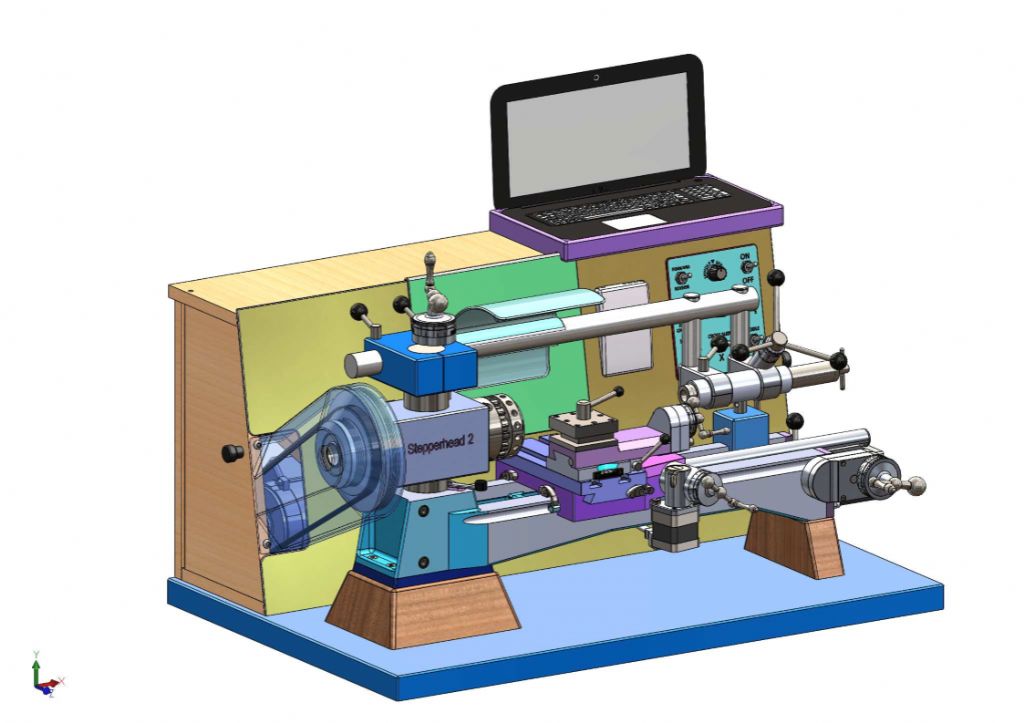Forked from the "Worth It" thread.
Posted by Robert Atkinson 2 on 28/04/2023 15:57:42:
Jelly said:
"… For me there's a real gap in the market for Myford to undertake some meaningful product development to offer a lathe the size and quality of the Super-7, but refreshed with the features of the 254, and geared to offer speeds appropriate to modern tooling on the size of parts you'd expect to use a 3.5" centre height lathe for; that would actually differentiate them from the competition from abroad. "
I could not agree more. They have the name to charge a premium price. It would be so good if they re-engineered it keeping the style but integrating (not scabbing adding on) a 3 phase motor and VFD, deleting the clutch (not needed with VFD), camloc chuck (with adaptor for the old threaded kit), primatic bed etc. Options could be DRO (again properly engineered into the design), ELS (instead of gearbox) and powered cross-slide (possibly leading to CNC).
I recon they would make money on a bit of investment and possibly set the standard for the next generation of small lathes.
Robert.
It's funny you should say that…
I currently have a stack of lathe beds in the workshop which were originally destined to become the ways for my Horizontal Boring Mill project… Having now filled both the space and niche it would have occupied with a very large turret mill, I've been mulling over what to do with them.
Attempting to develop something that fills the niche described would be an interesting project on a par with the HBM, although I doubt I'd be in a position to commercialise it past the stock of beds I have.
I broadly agree with your list of requirements, but if I put a manufacturing hat on it potentially makes more sense for some of the options to be default features.
I suspect that for serial or volume production offering an ELS would actually be far cheaper than a proper screw-cutting gearbox these days, similarly electronically powered cross-feed is going to be cheaper than the machining time for feed-shafts and gearbox.
That would then allow the DRO to operate from the encoders on the servos (an idea I'm not mad about, but would save a lot of cost, separate linear encoders would be an easy add-on though) and enable an almost "plug-and-play" conversion to CNC with a dedicated kit of ball-screws and controller.
It also occurs to me that in a CNC scenario the quintessential Myford accessory, the vertical slide, would actually take on a whole new dimension in that sort of scenario, equipped with a servo-drive one need only add a 40mm standard powered spindle mount, it turns the lathe into a tiny Mill-Turn.
The requirement I have in my head as most challenging would be to engineer a headstock which could truly provide a range of speeds allowing hobbyists to take full advantage of modern tooling, which would probably require a max speed of 10,000-15,000 rpm (assuming it's optimised for a minimum workpiece in the region of 1/4" to 10mm, and non-ferrous materials).
Assuming that for drilling, out-of-balance turning and the like, a more normal range of speeds would also be desired, that probably requires either a specially specified Inverter-Duty Motor suitable for very high frequencies, or a permanently tensioned flat-belt system, the former being perfectly reasonable for volume production, but rather pricy for the first prototypes, and the latter adding the kind of complexity more associated with Schaublin, Monarch, Holbrook, and Hardinge than with a Myford.
15,000 RPM also requires a lot more of the bearings, although if you're completely eliminating belt-changes there's more leaway to provide for that, it also pretty much demands a collet-chuck as a default option, and possibly an interlock to prevent using a 3/4 Jaw at full speed (it's scary enough swinging a 10" steel-body 4-jaw at 3,200 rpm, let alone a 6" one at 15,000!).
Any opinions on the future development trajectory of the small lathe welcome.
Jelly.






